One of the most common issues you might encounter when growing kale is the relentless attack on your kale plants by various pests. These voracious critters can quickly turn your thriving kale patch into a battleground of chewed leaves and wilted greens. So in this article, I’ll cover 8 common kale pests that love eating your crop, as well as solutions to rid these pests from your garden!
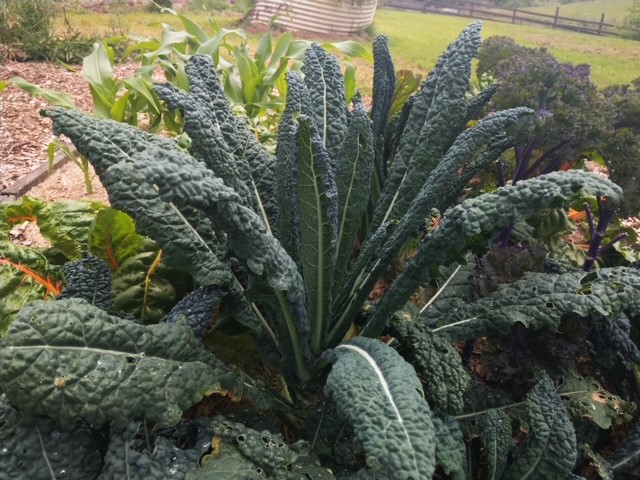
Table of Contents
What’s Eating My Kale?
The most common pests eating your kale are cabbage worms, flea beetles, cabbage loopers, beet armyworms, cabbage aphids, Harlequin bugs, diamondback moths, and whiteflies.
Let’s find out more about what’s eating your kale and how to get rid of them!
Related: Kale Seedlings Turning Yellow? | Growing Kale | 6 Causes Of Dying Kale (And How To Fix It!) | How To Freeze Kale
1. Cabbage Worms
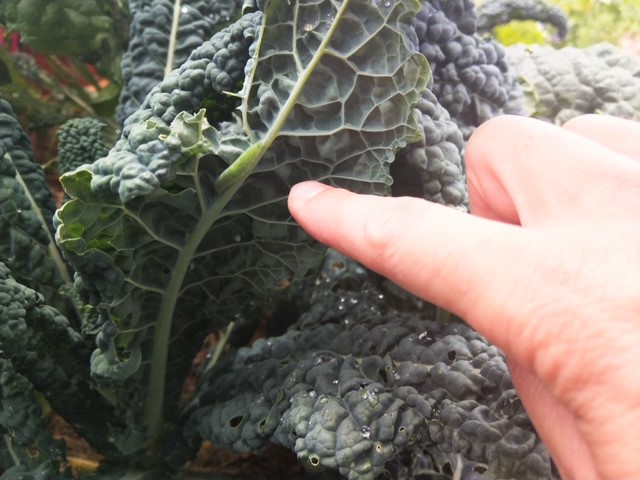
Cabbage worms are hairy green caterpillars that have a velvety texture (should you feel like identifying them through touch), with a fine, yellow line down their backs. They have three sets of legs at their heads and four towards their back end.
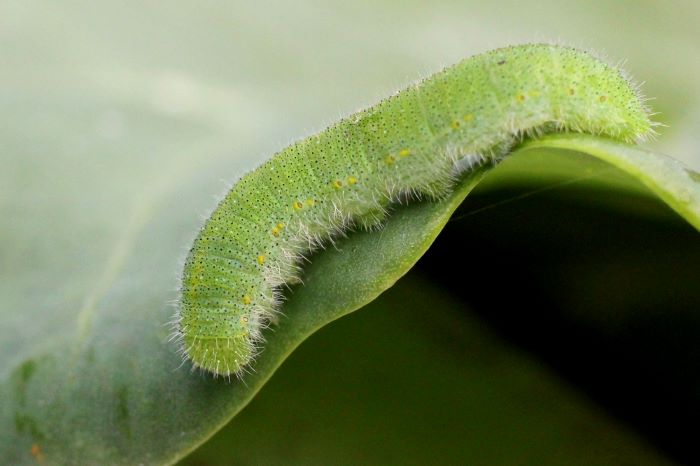
Cabbage worms, also known as Imported Cabbage Worms and Cabbage White, are the larvae of cabbage white butterflies (Pieris rapae) that love to munch on your kale plants. The cabbage white butterfly lays singular oblong eggs on the underside of your kale leaves that are fairly distinctive.
If you discover large, irregular holes on your kale leaves, or the head of your plant, coupled with greenish-brown specs (the caterpillar’s feces), cabbage worms are to blame. These little pests have voracious appetites and can quickly skeletonize your kale if there are enough of them. See my photo below of my kale plant decimated by cabbage worms!
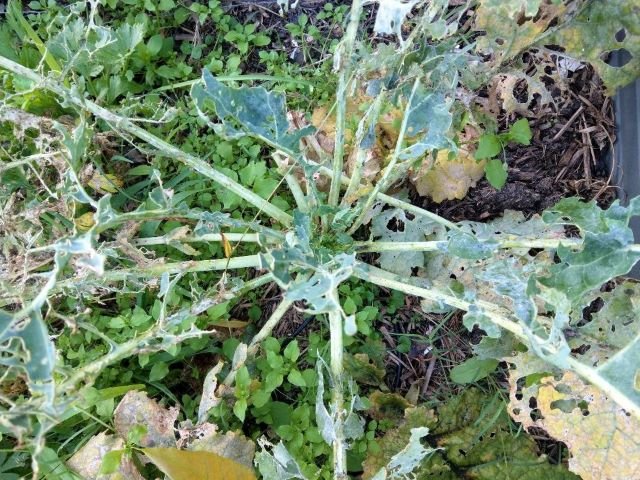
How to Get Rid of Them: If you spot the cabbage white flitting around your plants, be sure to check your kale for eggs. If you see any eggs, remove them from your plant. You can do this by wiping them off the leaves with a soft damp cloth or removing that part of the kale leaf and disposing of it. The same applies if you spot any of the hungry green caterpillars, you can remove them by hand if you’re not too squeamish.
Once you have removed all of the cabbage worm eggs and caterpillars, you can spray your plants with neem oil. This should be done every 2-3 days for 2 weeks, and then once a week thereafter. Another option is to cover your kale with floating row covers to prevent the butterflies from landing on your kale. This option is especially good if you have a raised garden bed as it’s easy to cover.
2. Flea Beetles
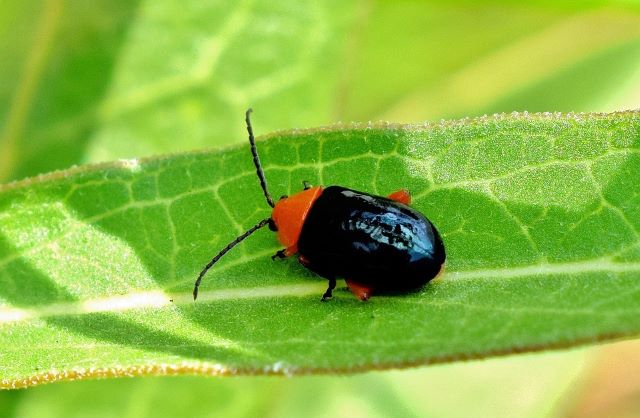
The Flea Beetle is a common garden pest that likes to nibble on a wide range of plants, including kale. These little beetles get their name from their ability to jump like fleas when they feel threatened. They are darkly colored beetles with a metallic sheen, measuring between .06-.12 inches (1.5 and 3mm). Their hind legs are well-developed, allowing them to jump rapidly.
If Flea Beetles are eating your kale, your kale leaves will be riddled with small pits or holes that give your kale leaves a characteristic shothole appearance. The growth of your kale may also be impacted by the feeding habits of flea beetles, and your kale plant could eventually be killed by them.
How to Get Rid of Them: To get rid of flea beetles you can spray your kale with neem oil, which will both kill and repel the little pests.
To protect your plants from a flea beetle invasion, you can cover your kale with floating row covers.
Additionally, you can spread diatomaceous earth around your kale.
3. Cabbage Loopers
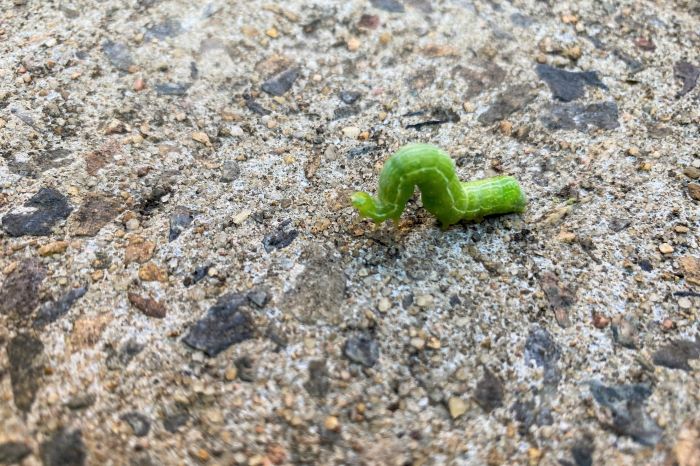
Cabbage loopers, also known as true cabbage worms, are the larvae of the cabbage looper moth. These green caterpillars are destructive pests that have a strong affinity for plants in the Brassica family, making them a common nuisance for kale, cabbage, broccoli, and other cruciferous vegetables.
You can distinguish cabbage loopers from cabbage worms by their coloring. Where the cabbage worm has a pale yellow stripe down its back, the cabbage looper has thin white lines down its sides.
Cabbage loopers get their name from the way they move, as they move in a looping or “inchworm” motion. If your kale is being eaten by cabbage loopers, there will be widespread damage to your kale leaves, in the form of large ragged holes.
How to Get Rid of Them: One way to get rid of cabbage loopers is to pick them off your kale by hand and dispose of them.
Like other caterpillars, you can stop the adult moths from landing on your plants to lay their eggs by spraying the kale leaves with neem oil or covering them with floating row covers.
4. Beet Armyworms
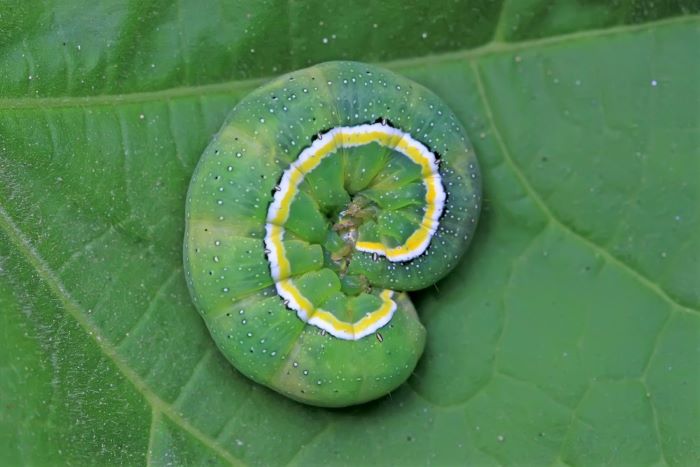
A beet armyworm infestation is particularly devastating, as these caterpillars can devour your kale in a few short nights. Beet armyworms get their name due to the way they make their way across your garden, which resembles an army regiment on the move!
Beet armyworms range in color from pale green to black and have smooth bodies with distinct dark and light lines on the sides of their bodies.
Beet armyworms leave closely grouped or singular holes on the leaves of your kale and will skeletonize your plant if left unchecked.
How to Get Rid of Them: As with the other caterpillars that plague your garden, you can get rid of beet armyworms by removing them from your plants by hand. When they are in the early stages of their lifecycle, applying neem oil can be effective in controlling them.
Beet armyworms are not the easiest pest to control, but you can make it harder for adult moths to lay eggs in your garden. You can do this by removing weeds close to your vegetable patch that the moths favor such as pigweed.
Additionally, you can protect your plants by using floating row covers. They are effective at stopping all manner of pests from landing on your kale.
5. Cabbage Aphids
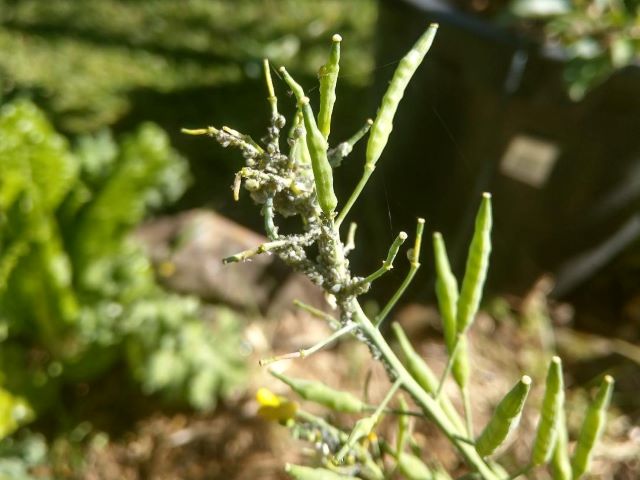
Cabbage aphids are small, soft-bodied, grayish-white/ green species of aphids that love to feed on your kale. These tiny sap-sucking pests can usually be found congregating in large numbers on the stem of your kale, where the leaf and stem join.
If your kale is riddled with cabbage aphids, your plant’s growth can be stunted while the leaves will become misshapen and turn yellow. The leaves of your kale will eventually fall off and your plant will die.
How to Get Rid of Them: To get rid of cabbage aphids, you can use the same method you would use for a normal aphid infestation.
The most effective way to eradicate cabbage aphids from your plant is to give it a strong blast with the garden hose. This will dislodge the aphids. I like to do this in the early morning so that the soil around my plants has enough time to dry out during the day.
Once you have dislodged the aphids you will need to apply a mixture of 1 tablespoon of dishwashing liquid, mixed into about 1 quart (1 liter) of water. This will need to be done once every 2-3 days for 2 weeks and once a week thereafter. Or you can use an organic insecticidal soap spray already made up for your use.
6. Harlequin Cabbage Bugs
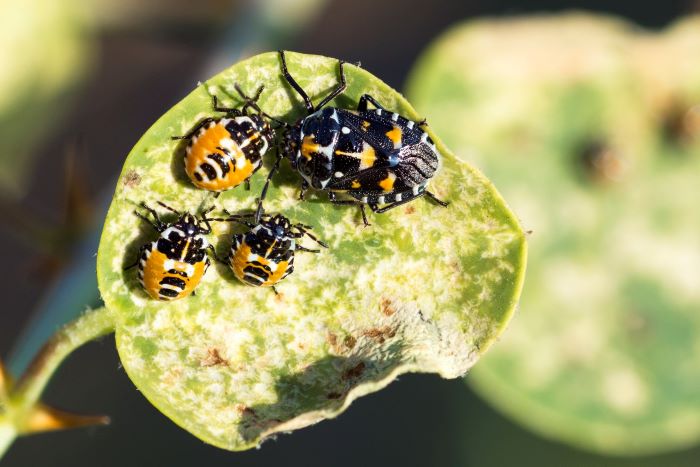
Harlequin cabbage bugs, also known as harlequin bugs or calico bugs (Murgantia histrionica), are vibrant and distinctive pests that belong to the stink bug family. These colorful insects are notorious for targeting plants in the brassica family, including kale, cabbage, broccoli, and mustard greens.
Harlequin cabbage bugs have a striking appearance with a shield-shaped body, measuring around 0.3-0.5 inches (9.5mm). They display bright colors, such as red, orange, yellow, white and black, arranged in distinctive patterns. As they mature, their colors intensify, making them easier to identify.
These brightly colored stink bugs feed on your kale by sucking the sap from the leaves of your plant. If your kale is being eaten by harlequin bugs the leaves will become discolored, and white spots called stipples will appear. Your kale leaves will eventually wilt and turn brown.
How to Get Rid of Them: The first thing to do to get rid of harlequin bugs is to remove the eggs and bugs by hand. You will need to wear gloves, cover your arms and use protective eyewear (sunglasses work) to do this as they leave out a terrible smell when they are threatened.
Once you have removed all of the visible pests from your kale, you can spray your plants with neem oil. Following this, you can cover your plants with floating row covers to keep the stinky pests off your kale.
7. Diamondback Moths
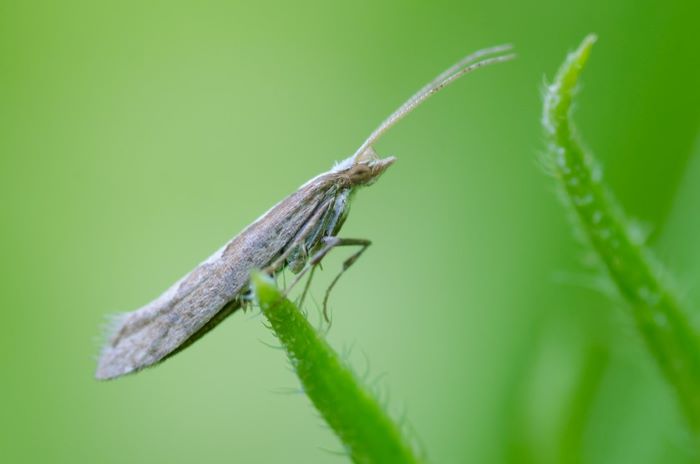
Diamondback moths (Plutella xylostella) are small, slender moths that look more like stick insects. These insects are infamous pests in vegetable gardens, particularly targeting plants in the Brassica family, including kale, cabbage, broccoli, and cauliflower. The larvae of diamondback moths are highly destructive.
The adult moth lays its eggs on the underside of your kale plant’s leaves. When the larvae hatch, they feast on your plant’s leaves, popping out on the other side of small holes. The larvae are hairless, light-green caterpillars that have tapered bodies.
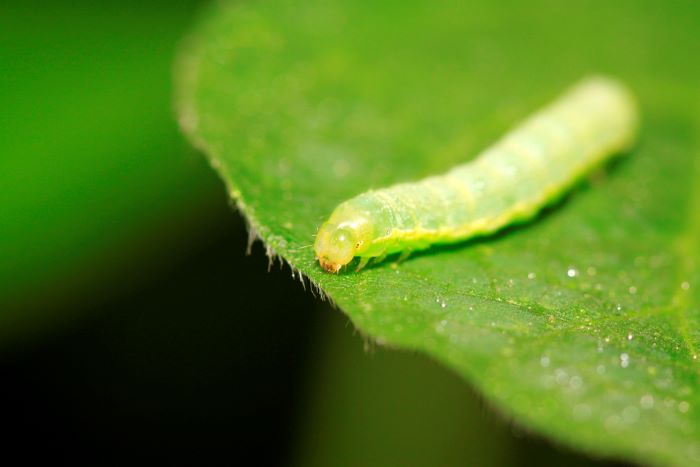
As the larvae grow, their damage increases, with their feeding habits causing large irregular holes in the leaves.
How to Get Rid of Them: Getting rid of diamondback moths is a difficult task, and not easily done. The best cure in this case is prevention. You can prevent the moths from laying their eggs on your plant by using floating row covers.
If you have spotted the larvae on your plants, you can use Bacillus thurigiensis to control them. This is an organic method as it is natural, soil-borne bacteria.
8. Whiteflies
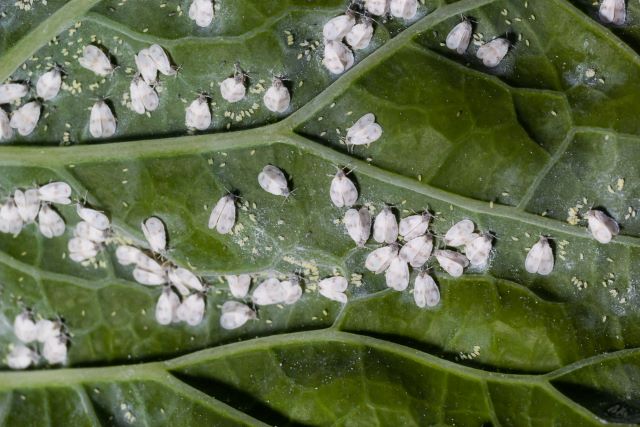
Whiteflies are tiny, winged, sap-sucking insects that are a relative of aphids. They are common pests in many gardens and can infest a wide range of plants, including kale. They are named after their powdery white appearance.
As with many of the other pests mentioned, it is the larvae of whiteflies that are a danger to your kale crop. The adult fly lays its eggs on the underside of your kale plant’s leaves. These eggs are usually white or transparent at first, but turn yellow over time.
When the larvae hatch from the eggs, they begin to suck the sap from your plant, leaving small holes in their wake. In addition to tiny holes in your kale plant’s leaves, symptoms of a whitefly problem include wilting and yellowing leaves.
How to Get Rid of Them: Getting rid of whiteflies is easier than you may think! One of the easiest ways to keep whiteflies from attacking your kale is to plant strong-smelling herbs close to your plants, such as thyme or rosemary. I have found that planting rosemary is an excellent deterrent.
In addition to planting pungent plants in your garden, you can use sticky traps like these around your plants.
Further reading:
